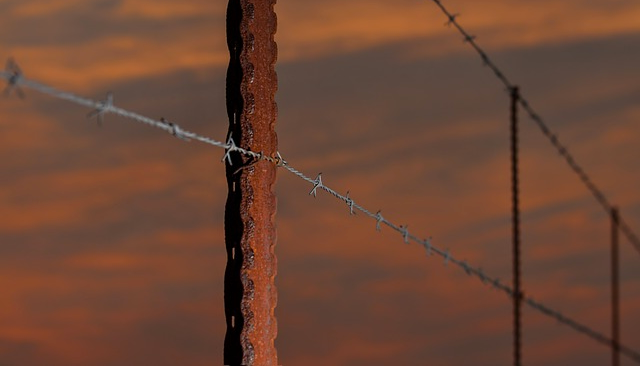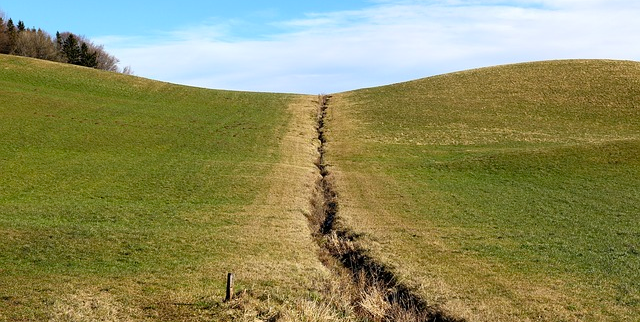
Sometimes, conflicts and social breakdowns are all about speed. In fact I’d argue they’re all too often about speed – fast or slow.
- That sudden change can be too sudden, and society falls apart. An invasion, a plague, a social breakdown can be damaging because they’re so damn fast.
- Or you have a slow change is so slow that people adapt automatically and don’t even know there’s potential conflict brewing. Sure there’s technically a plague, but its spreading so slow (or slowed down by modern technology) no one ever realized they were courting an apocalypse. Conflict averted and you never knew it.
- That character who jumps to conclusions makes situations work.
- That character who takes things slow doesn’t address problems in time, and conflict is born.
When it comes to conflict in your world, you have to ask how fast and how slow things are happening. In fact, speed – or the lack of it – may be the only reason a conflict exists. Too often people ignore solutions or go outright Leroy Jenkins on a problem and help assist the apocalypse.
So when you’re writing about the conflicts in your world you have to ask just how fast events are happening and how rapidly people are reacting. That determines what happens, or even if there is a conflict. You might even find, once you think about it, that there’s conflicts you never noticed in the societies you made all because of speed . . .
Here’s what to ask when it comes to speed and conflicts. (more…)

(Way With Worlds is a weekly column on the art of worldbuilding published at Seventh Sanctum, Muse Hack, and Ongoing Worlds)
Last column I covered bias and bigotry in the settings you’re developing. Not a pleasant subject, but one that’s important because believable characters have their biases and often their bigotries – just as we do.
To summarize my handy rules-to-remember on the subject:
- Everyone has Opinions.
- When opinions “solidify” they become Biases.
- When Biases become part of our identity they become Bigotries, sort of black holes of ideals that suck other things in.
Now when bigotries seize control of an individual, a group, a nation, or a galactic confederation, that can lead to outright campaigns against various people. Attempts to extermiate, subjugate, control, or drive out an entire identifiable group. In short, persecutions.
Which is the unpleasant subject of today’s column.
Persecution is a common theme in many works, as it is (sadly) part of the human experience and human regrets. However persecution is also a word and an idea thrown around too easily, so we don’t often think about persecutions in detail when worldbuilding. It’s easy to genericize it, to stereotype it, asopposed to dealing with it as what it is – an unpleasant but near-living thing.
Let me note, again, I am discussing the behavior of humans and human-alike creatures. So other races you create may behavie differently – maybe the Dwarves of Lavabarrow* have a semi-hive mind that makes them integrate with any society or something. That’s up to you.
With that being said, let’s ask just what is persecution in a setting? (more…)

(Way With Worlds is a weekly column on the art of worldbuilding published at Seventh Sanctum, Muse Hack, and Ongoing Worlds)
Having explored the psychology of conflict and the way that conflicts can go from simple disagreements to smashing galaxies with a Dimension Cannon, let’s take a look at some of the more personal elements of conflict. It’s a bit of a break from the galaxy-smashing thing, but the potential is there of course.
Let’s talk biases and bigotry, those steps that often let us climb the ladder to conflict. Or descend into the pit of conflict, whatever, pick your metaphor.
We’ve all encountered biases and bigotry in real life and been driven crazy by them. We know people affected by them. In our historical readings we’ve seen cases where biases and bigotry have led to atrocities with depressing regularity. Bias and bigotry is everywhere.
Which means that as world builders and creators, we need to think about these horrible things because they’re probably part of our worlds.
Worldbuilding isn’t for people afraid to get their brains messy. So since you have to write the biases and bigotries in your world, and the results of their existence, let’s talk about them.
But first . . . (more…)

(Way With Worlds is a weekly column on the art of worldbuilding published at Seventh Sanctum, Muse Hack, and Ongoing Worlds)
So there’s a reason I covered humans (and human-alikes) and the psychology of conflict first. Characters and their institutions are often the causes of conflicts – and characters are the lenses through which players/readers experience your world. We have to think about them first in the case of worldbuilding because it gives us the right perspective.
But with that said, you need something to get your cast to engage in (or prevent) atrocities. What are he drivers and elements that create wars and conflicts?
Again, it’s often a matter of perspective. Which is the problem in fiction – and come to think of it real life as well . . . (more…)

(Way With Worlds is a weekly column on the art of worldbuilding published at Seventh Sanctum, Muse Hack, and Ongoing Worlds)
For the next few columns I’m going to be exploring the dysfunctions and conflicts in the worlds we create. Not conflicts brought about by our mistakes as worldbuilders (though those can become fuel for deeper worldbuilding as noted), but what happens when things break down? Sure we’re all busy building our world, but things go wrong inside the worlds as part of good worldbuilding, and we have to figure out the implications of the crises we create.
In fact, as repeated several times, conflict is actually part of the process of making a world accessible and interesting. People want to hear stories and play games about things that happen, and that often involves conflict. Not always of course, but often enough it warrants its own section here in a series of columns by a slightly-mad-scientist of randomizing ideas.
Now everyday conflicts are one thing; arguing over a tab, not being able to find dragon dung at the alchemist’s shop, and so on. Let’s talk about the big ones, the ones that are epic and horrible, the ones we write about – and the ones that in real life make us wonder why the hell they happened.
So let’s go and find out just how things break down and go wrong. We’ll start with how it stays together in the first place – well, how our cast of characters and people keep it together. After all, they’ll be the ones you’re writing about or your players are playing.
Also they’re probably the ones causing the problems . . . (more…)

(Way With Worlds is a weekly column on the art of worldbuilding published at Seventh Sanctum, Muse Hack, and Ongoing Worlds)
So last we met I discussed how using RPGs was actually a boon to Worldbuilding. There were positives in stimulating thinking, in sheer entertainment, and of course using premade concepts to test the consistency of an RPG system.
Now let’s talk the negatives of using using RPG systems in your worldbuilding, be they mapping characters to classes or diving into them for ideas. Yes, there are negatives.
Hey, it’s not all sunshine and worldbuilding here. Some stuff is just bad.
The core issue is that RPG systems are just that – systems – and any use of a system can constrain you. That is actually the point of having a system. The problem is the system is an outside factor influencing your imagination.
Which is good. Sometimes.
In this case however, we’ll look at how it can go bad. (more…)

(Way With Worlds is a weekly column on the art of worldbuilding published at Seventh Sanctum, Muse Hack, and Ongoing Worlds).
A lot of people who wolrdbuild get into roleplaying games. I feel I can make this statement clearly; its true in my experience, and of course I’m not quoting any numbers so I have deniability. I’m covered here!
But seriously, it seems like people get ideas from, put ideas into, or think of ideas in forms of RPGs. I’m not just talking the freeform collective storytelling style of RPGs – I’m talking about the rules-and-dice type RPGs that we’re all familiar with.
We wonder what class a character would be in a given game.
We try and build a character we made in a given game.
We think of game rules as writing guidelines.
We get ideas looking over game rules.
And more . . . (more…)

(Way With Worlds Runs at Seventh Sanctum, Muse Hack, and Ongoing Worlds)
So we discussed the odds of things in your world, of knowing how likely things were. Now let’s talk the thing you’re writing the most, the odds you know but don’t realize you know, and the most important part of your world and he tales in it.
What’s normal.
In fact, I’m going to tell you that what your stories are about, your world everything about them, is about what’s normal. No matter how freaky your character, strange your plot, normal is what’s important.
And you need to know what’s Normal in your world.
The Importance Of Normal
Normal in your world is what is reliable and predictable. Gravity works, rain falls, and Dz’orgak the demon lord is made from the blood of the Fallen God which is why every ruby gem is his eye spying on your sins. Normal are those truths that your world rests on as sure as we rely on the sun rising.
Enormous amounts of worldbuilding and tales inside those worlds rely on a grounding of normal. Roadways that re reliable, swords made of metal, reproductive biology that ensure species go on, and so on are just normal – what you can count on so you can build a world of it, even if some may change Normal gives your world a foundation so it actually is something, and gives something for readers/gamers to understand and apprehend.
If there’s no sense of normal, then the world itself becomes meaningless. Now in a few cases this might be your point, but in general worldbuilding is about building – making something. Normal has to be assumed, a foundation must be there, or everything is meaningless.
Even if your world is weird to us, having a Normal means we can understand it, relate to it, and thus believe it and enjoy it. It just may be a rather odd normal.
Weird Needs Normal
This normalcy is important not just to provides believable world but to help people relate to what goes on it it – which often are anomalous events and characters.
Tales often deal with exceptions to the normal because stories are often about deviations from norms – I mean if there’s no deviation not much may actually happen to tell. This deviation could be as big as a war among galaxies or as small as a quirky set of characters at a coffee shop who are weirdos. However the normal provides the grounding to tell you what the abnormal means.
Some characters specialize in the abnormal – the policeman who investigates crimes, the warrior who fights invaders, the psychologist who deals with insanity. There’s a reason we love stories with people like that – they’re interesting as something happens. They try to restore normal (or find a new one) and that’s what the story is about.
Normal lets you understand just what the abnormality you’re often writing about means.
Sort of the normal abnormal. If you don’t know normal, these anomalies become nonsensical or worse, “inappropriately normal.”
Going Away From Normal To Get Back To It
Knowing the Normal of your world is also important to understand events and thus stories that take place in it. Most people’s travails, most tales, most great wars and small quests, are either seeking a return to normal or a new normal. Normal is also a “goal” of people to get to, even if normal only exists in their head.
Now of course this normal may not be possible, or desirable, or realistic. The normal a character or a culture may seek could be a complete delusion. Which is important because there’s normal and normal if you get my drift . . . but that’s also part of the world and your tales.
The True Normal And A Character’s Normal
Knowing what’s normal in your setting helps you understand character motivations and expectations. The average, the reliable, the likely affect people, providing a ground for what happened or a contrast to their own crazy lives. Expectations of what is normal for characters – and often what they’re seeking – comes from their ideas of normal.
Characters may have an inaccurate ideal of normal. How many times in history have we seen people long to return to “normal,” when their idea of normal was a self-deceptive mix of nostalgia and ignorance? How many do we see now?
There’s normal and then there’s the normal in our heads. We need to understand what our characters expect to be normal – and what is really going on.
In fact, characters may just not understand normal or want to. If your universe is one of magic and a scientific civilization refuses to admit this, then you may know normal – but the characters don’t. That’s quite a tale to tell, yet the whole point is ignoring normalcy.
You need to know what’s normal. Your characters well may not – which of course is part of things you’d be writing on.
Their inaccurate ideas of normal may be common enough that their abnormality is rather normal.
Audiences And Normal
Your audience will almost immediately need a set of normal expectations to understand your work – often a tricky business when you’re creating a crazy world. As noted earlier, people have a natural sense of odds and likelihood – and in turn, of normalcy. They’re going to look for it right off the bat.
Audiences can usually sense if your world has some “normal” in it. We’re good at finding coherence in settings, and if your world doesn’t have rules and its own normal, people will pick up on it. They may not care, they may not need much “normal” to figure things out (magic works, wizards blow stuff up a lot might be enough), but they need something. If you don’t give that to them, the world will lack meaning to them.
It also gets a bit tricky to communicate your setting as people have to get it, while at the same time it’s rules may be a bit odd, and you don’t want to overexplain things on top of that. That requires some careful writing of your tales, to avoid over-explaining or under-explaining the world you built.
This is ultimately where you, the world-builder, have to figure out what’s normal. Oh sure you’r not going to spell it out, but you need to know.
Knowing Normal
So how do you know your normal in your world?
I find, rather interestingly, we usually build “Normal” into our worlds by instinct. You can’t have a coherent setting without some rules and norms and so on. In fact, to try and make your setting weird enough for your goals you may have to actively make it stranger.
However, I think we’re helped in worldbuilding by being aware of normal and what’s normal. Much as when I discussed the odds, we should spend some time analyzing what is normal and expected in the world. Even if we never use it directly, it helps us build the world.
Here’s a quick guide to the Normals to look for
- The Reality Normal: What is the nature of reality. Hard science? Everything has magic in it? What does this mean for your setting (if anything). Sometimes this is boring as you say “actual physical laws, next.”
- The Setting Normal: What are the norms of your setting or settings. Drought or flood, many mountains or huge plans, and so on. This helps you build the setting, and understand how characters and cultures interact with it. If your setting has a lot of desert, the norm is “dry” and the norm also is going to be finding water.
- The Culture Normal: What is the normal for cultures characters are in, the expectations, ideas, and language. There will be both the “Norms” of the culture and the normal parts of the culture, what is expected and what is common. A culture may put great value on honesty, but may have sexism built into it that is common but rarely analyzed as it’s so regular.
- The Personal Normal: What are a characters own experiences, understandings, and so on – and how normal are they? A character may be utterly average (dare I say normal) with one outstanding trait. A characters’ experiences may differ radically from others – making them seem disconnected or perhaps making them wiser.
Note these norms are all going to play into each other. If you have a desert culture that values honesty but has the inbuilt assumption men are violent, a male character raised by water thieves as a calm master of disguise is going to really be something read. How many times will someone ask “are you sure he can keep calm pretending to be this guy?” and what plot points could you explore.
Think Normal
In doing worldbuilding, much as I note it helps to note odds and some of the math of your world, consider what’s normal. Definitely put it in your worldbuilding notes as a reminder for yourself so keep you grounded in what you do. It’ll remind you of what should happen – or remind you in what case it’s time for things to get abnormal.
– Steven Savage
Steven Savage is a Geek 2.0 writer, speaker, blogger, and job coach. He blogs on careers at http://www.musehack.com/, publishes books on career and culture at http://www.informotron.com/, and does a site of creative tools at http://www.seventhsanctum.com/. He can be reached at http://www.stevensavage.com/.

(Way With Worlds Runs at Seventh Sanctum, Muse Hack, and Ongoing Worlds)
I’m not quite Han Solo. You don’t have to tell me the odds, but I’d like a good sense of them when it comes to your world. But I do look good in leather.
When we play a game or ready a story, intuitively, we need to know the odds. If it’s unlikely someone can survive a fight with ten well armed Knights of The Singularity, when they win it makes us wonder how. If someone is ethnically and racially different than we expect in a game world, the impact of that difference is felt if we understand just what it means. Likelihood – and lack of likelihood – is something that we need to understand to get what something means.
I think this is instinctive to humans, and even more so in people with a vague sense of math and probability. We’re always evaluating, re-evaluating, projecting, and understanding. When math is part of our lives, even moreso. Either way, it’s human.
So the odds need to be part of your world. If they’re not, then you may be in for some problems. If you can’t express the chances of things happening, then your world isn’t going to make sense. People won’t be able to grasp what’s going on as their natural ability to evaluate can’t find anything to hold on to in order to make sense of the world.
(Even if you do know the odds, you might not use them right)
Lets talk what the odds are in your world, how to use them – and how not to overuse them. (more…)

(Way With Worlds Runs at Seventh Sanctum, Muse Hack, and Ongoing Worlds)
Having discussed character goals, abilities, plans, actions, and results, let’s talk about the stakes characters fight for.
Oh, and how we screw it up. And maybe how they screw it up, but that’s more “story” than “author messed it up.”
What Are We Fighting For?
Characters set out with certain goals and values and are trying to achieve something – even if that’s preventing something. They are, in short, fighting for something. It may not seem like a conflict, but if it’s not something easy to do, it’s a conflict of some kind.
We, as readers, are drawn into the goals because the world is believable, the characters well written, the gameplay compelling, etc. When the stakes are well-realized, when they are understandable, they both draw us into the world and enhance the experience. When stakes become our stakes, the goals our goals, the risk our risk, we’re truly involved – and the world we experience is truly alive.
If you’ve ever dodged in real life while playing an FPS or gotten angry at a fictional character, you know how compelling a world and its realization in fiction or media can be. The stakes are real.
Probably this is why we love viscerally. Even the worst film or story can make us sympathize with someone (no matter how poorly written) in a situation we relate to. We get humiliation or pain. Probably his is one reason authors and worldbuilders resort to blood, violence, sex, and fear too often – they’re visceral and have that chance to draw you in.
(Well visceral until you get tired of them).
So as you may guess, the Stakes are part of your world. They’re what gives us a tale, what makes characters believable, and what gives us a gut-punch realization of “what’s going on.”
Well, We Are Fighting For It, Right?
The things that occur in your world, the challenges and risks, are born of your setting – just like the characters who deal with them. They are part of the weather or he culture or the divine or the infernal that you’ve created. What’s going on, what’s at risk, is part of your setting.
Well, it is if you do it right.
Action-reaction, results, risks, are all part of good worldbuilding. You need to know what happens, what goes wrong, what results occur when things are done or aren’t done. When you know how things “work” then in turn you can understand the stakes of what’s going on, how the characters feel, the results they want. – and what draws in your reader or player. If your world isn’t properly defined, properly connected, it becomes unbelievable, the stakes are meaningless, there’s less visceral appeal, and suspension of disbelief gives up and goes and gets a coffee.
Ever read a story where the goals seemed lame, the risks trite or poorly-created, and the sense of what people are trying to do didn’t hold up? Or you’d seen it all before and felt like someone had brought in a Risky Stakes transplant from another story? The world wasn’t well designed, the stakes had no meaning, the characters had no meaning, and you were just there watching a pile of stuff.
You get the idea.
How you build your world sets the stakes for characters. Now that may seem obvious, but I find we get trapped in designing them or not even realizing them. We stop building the world and start just throwing stuff into it.
Overdone Stakes
(Yes, lame joke preserved from original column).
One problem in worldbuilding is that after we start writing our world, or coding it, we need to keep people’s interest, so we raise the stakes ridiculously. You’re probably especially aware of it from bad media and some games, where the villain apparently has a magical backside that holds plot devices, or suddenly the enemies are a lot tougher for no good reason. It’s just there to ramp up difficulty to maybe hold your attention.
This “ramp up”is often a natural result of increased competency on the part of the protagonists – as noted in last column, characters growing and applying themselves towards goal is part of any tale, and thus world. But we can way, way too easily fall into jacking up the difficulty level as it were to keep things going.
This is a risk because basically you throw out the laws of your world just to keep people’s attention. Now you might be able to keep it within setting constraints, but based on many things I’ve seen . . . I wouldn’t take the risk.
Now my answer to this is “just build a good world”, but there are traps we often fall into. So to help you out, let me note a few common ways of raising the Stakes that we can do with out:
- The End Of The World As We Know It – And I’m Annoyed – Turning things into world-threatening crises when they weren’t, aren’t, and can’t be explained may keep attention but is really obvious and worldbreaking.
- The War Of Heaven And Hell And Good Taste – Sometimes stories wander into supernatural territory and next thing you know everyday stuff or even non-everyday stuff is a theological smackdown. That’s good if that’s your intent, but trying to get metaphysical just to keep interest can be quite lame. You can also have the stakes raise to such ridiculous levels with pasted-on-morals that it might as well be a kind of Potemkin Apocalypse.
- The Last Best Extremely Contrived Hope – Another way people jack up the odds is creating a chosen one who’s the only person that can save things. THis is pretty much the aforementioned Idiot Plot or Planet of the Morons. And it’s unbelievable, worldbreaking, and annoying because it stands out (and it’s over done).
- The Destiny March of History – Suddenly, characters discover destiny, legacy, or something else that makes their struggles More Important. Meanwhile the audience doesn’t buy it.
- The Sudden Ramp-Up – Suddenly things are tougher . . . because. Not due to cause-and-effect. Not due to a master plan. Just you ramp up the stakes with some plot device to keep interest. Yes, it’s obvious.
Don’t jack up the stakes inappropriately. Don’t rip your world apart to wedge a piece of extra excitement in. It’ll break your system. And sure, some creators get away with it, but some don’t.
Do you want to take the risk? Are your stakes worth it?
No, they’re not. Build a good world. If anything, just find the most exciting parts of it to tell.
In Closing
Know the Stakes people are fighting for and what they’re trying to do. Understand the results – but let them be part of your setting. Otherwise you risk mapping tropes or easy-outs to keep interest – and people will know.
– Steven Savage
Steven Savage is a Geek 2.0 writer, speaker, blogger, and job coach. He blogs on careers at http://www.musehack.com/, publishes books on career and culture at http://www.informotron.com/, and does a site of creative tools at http://www.seventhsanctum.com/. He can be reached at http://www.stevensavage.com/.




